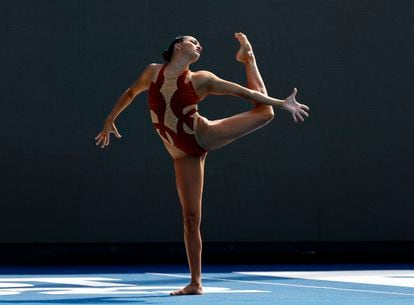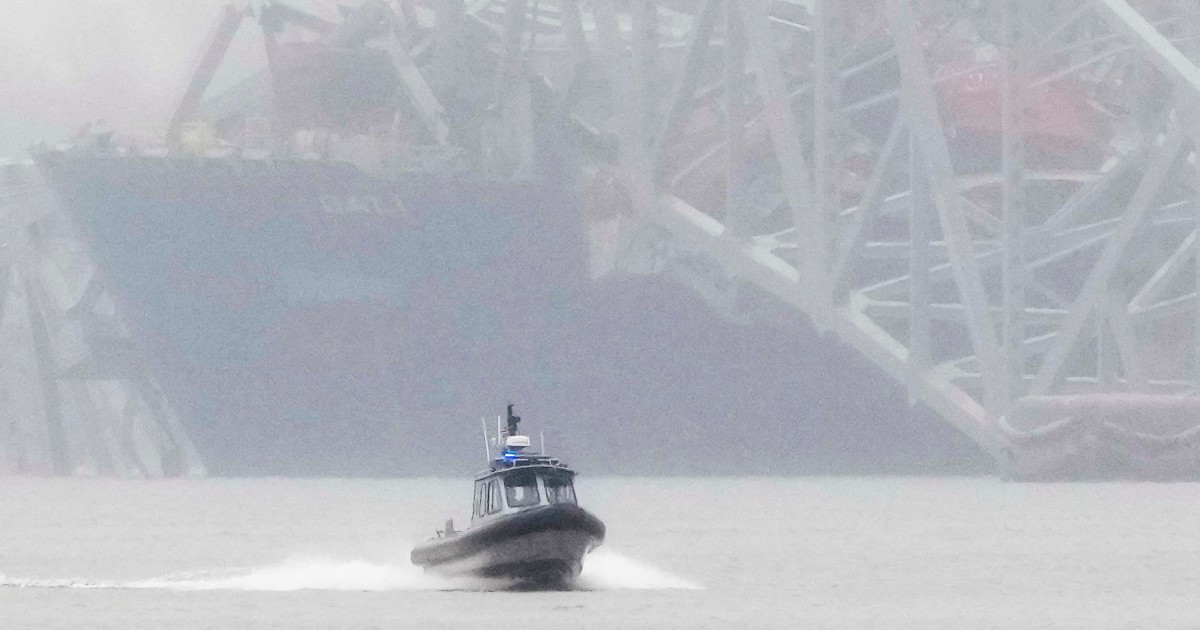New Yorker Ana Álvarez is, at 25, the most experienced swimmer on the US synchronized swimming team.
On Wednesday she finished her free solo final routine at the World Championships in Budapest, and while the judges gave her a score of 87,633 points, a rating that would earn her seventh place, she foundered.
She had been swimming for several seconds without breathing, completely unconscious, like an automaton complying with the muscular interpretation of a program of rhythms and musical notes.
When the melody ended, her brain shut down completely and her arms and legs stopped pushing her up to the surface.
The one who first noticed her dissonance was Andrea Fuentes, her trainer, who, seeing her defenseless at the bottom of the pool, rushed to rescue her from her.
"Anita did the last part of the unconscious routine," explained Andrea Fuentes on Thursday.
“She says that she doesn't remember anything.
Blackouts are common in our sport and, curiously, they are usually noticed at the end, because the body continues to execute the routine asleep.
It's what we call muscle memory."
Before becoming the US coach, Andrea Fuentes won four Olympic medals with Spain under Ana Tarrés, who now coaches the Israel team.
Both met in the pool on Isla Margarita to talk about the incident.
“A few days ago an Israeli swimmer fainted at the Kallipolis gala!” She told the technique to her favorite swimmer.
She “finished the choreography and she sank.
But she did the last part of the faded routine.
She was only noticeable because she swam a little lower than the other members of the team”.
Andrea Fuentes swims to rescue Anita Álvarez this Wednesday in Budapest.AFP
“I usually see this in girls with great muscular power, who suffer great mental tension and are hyperflexible”, observes Tarrés, “when they bend their neck backwards in some figure, after prolonged apneas, this can put pressure on the cervicals, and if the muscles become too tense, they cut off the circulation of blood and oxygen to the brain.
You sleep.
And you neither breathe nor suffer.
"Anita has a lot of flexibility in her neck and in the last gesture, she moves her arm back and turns her head," agrees Andrea.
"This can perhaps trigger a fade."
Ana Tarrés, who accredits half a century of experience in synchronized swimming, asks María José Bilbao, who in addition to being the oldest World Cup judge, is a doctor: “Can stress make the body go to some beastly revolutions and cause muscular overload that cuts off oxygenation to the brain?”
The judge is blunt: “If fainting is a bad response to stress, I'm sorry.
This is part of the competition.”
More information
This was the rescue of the swimmer Anita Álvarez
"These situations need investigation," adds María José Bilbao.
“We have already seen fainting in the past and we have only done a study of cases of bradycardia at 70 beats, which in very well-prepared swimmers caused fainting after very long apneas.
But Anita Álvarez's exercise does not have enough apneas to cause this problem.
The US medical team has to investigate and decide."
The judge warns that the lifeguards are not to blame for what happened, but rather, perhaps, those who allow a swimmer like Anita Álvarez to continue swimming after having fainted last year in the Olympic qualifiers.
“The lifeguards didn't notice right away because the choreography was over and a lot of times swimmers wave goodbye and sink,” she says.
“Andrea did notice because she was closer to her and saw it.
You have to think that the lifeguard could only jump from one end of the pool because at the other end is the podium and on the sides are the television rails and the panels of judges and technicians.
All possible obstacles!
The lifeguard has to jump from 25 to 30 meters, while Andrea was 15 meters away.
Nobody was wrong.
"The drowning drunk"
Synchronized swimming offers two kinds of competitors: the most aesthetic, like Ona Carbonell, and the most seasoned, like Andrea Fuentes.
Between the two they won two silver medals at the London Games.
Now, at 39, Andrea has become an unwitting heroine, as photos of her from the underwater rescue circulate and cameramen from all over the world make a pilgrimage to record her.
"It's a high-level sports hazard," she says.
“We see that athletes vomit or do not finish a marathon;
we see cyclists fall off;
why do you think that artistic swimming is not hard if we swim head down without breathing for a minute or more?
It is artistic because it punctuates the appearance of beauty.
But this happens many times in training.
They call
it drunkenness of the drowned man
.
It's a sweet feeling.
They have taken me out of the water too.
A lot of synchro people have been kicked out after collapsing for holding on too long."
Anita Álvarez at the beginning of her artistic swimming free solo exercise. LISA LEUTNER (REUTERS)
The swimmer dives into the pool on Isla Margarita. OLI SCARFF (AFP)
Anita comes out of the water to get some air.AP
But suddenly he loses consciousness and begins to sink. OLI SCARFF (AFP)
The American remains at the bottom of the pool with no signs of reaction. OLI SCARFF (AFP)
Her coach, former Spanish Olympic swimmer Andrea Fuentes, arrives to rescue her. OLI SCARFF (AFP)
People in the stands feared the worst. Anna Szilagyi (AP)
Andrea Fuentes tries to get her pupil afloat. OLI SCARFF (AFP)
The lifeguard comes to try to get the swimmer out of the water, who was not breathing. PETER KOHALMI (AFP)
Medical services try to get her on a stretcher. LISA LEUTNER (REUTERS)
Finally, he manages to take her away.
Anita recovered after a few minutes and is doing well. Anna Szilagyi (AP)
No one has died from practicing artistic swimming.
But until Wednesday's incident, only one fainting had been recorded in a major competition, in the Japanese team, during the 2008 Games. "When you gain experience, you see fainting coming," says Andrea Fuentes.
“First the body convulses asking you to breathe.
You feel a spasm in your chest and make a sound.
We swimmers feel the spasm of our partners.
There we know that we are in something hard and we endure.
We are at the border of drowning and if you go too far from that point you will faint.
Normally your companions take you out.
You lie down with blue lips, you breathe and that's it.
Here, as Anita was alone, she spent two minutes without breathing, swallowing water.
She pressed her nail with a pen so that her body would release adrenaline from the pain and she woke up there.”
"When your legs hurt in athletics, you stop or, if you're brave, you keep running," explains the US coach.
“This is how you win medals.
In swimming it is the same.
The one who is strong feels the suffocation and endures to improve his ability.
Michael Phelps did what he did because when his arms hurt he kept swimming faster instead of slowing down.
Before going to the final I told Anita: 'You have to give everything!'
Then when we were going to the hotel she told me: 'I gave it my all!'
And we joked: 'You have to give everything, but not your life!
'Don't take it literally!'”
You can follow EL PAÍS Deportes on
and
, or sign up here to receive
our weekly newsletter
.
50% off
Exclusive content for subscribers
read without limits
subscribe
I'm already a subscriber









